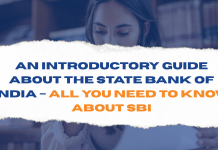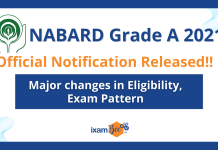RBI had held the third Bi-Monetary Policy Meeting from August 5-7, 2019. We are here with the Highlights of third Bi-monetary Policy Meeting. It is important to know that the Banking/General awareness section plays a vital role in increasing your overall score while attempting the RBI Grade B exam. At least 2-3 questions can be expected from the RBI Monetary policy in RBI Grade B 2019 exam. Being updated with RBI Monetary Policy will not only help you in RBI Grade B 2019 exam but also in other exams such as NABARD, SEBI, SBI PO, IBPS PO and many more.
Lets us understand RBI third Bi-Monetary Policy in detail:
Highlights of 3rd Bi-monetary Policy Meeting, 2019-20
The 3rd MPC meeting for FY19-20 was held on Aug 5-7, 2019. It was the 18th meeting of the MPC overall, since its constitution.
In its 3rd MPC meeting, RBI cut the policy rates for the 4th consecutive time through a unanimous decision. The rate has been cut by 35 bps while maintaining the ‘accommodative’ stance. RBI highlighted that the transmission of rate cuts has improved.
The key outcomes of the MPCs for this year are summarized in the table below:
| MPC meeting FY19-20 | 1st (April 2 – 4, 2019) | 2nd (June 4 – 6, 2019) | 3rd (Aug 5 – 7, 2019) |
| Resolution | reduce the policy repo rate by 25 bps | reduce the policy repo rate by 25 bps | reduce the policy repo rate by 35 bps |
| – Repo Rate | 6% | 5.75% | 5.40% |
| – Reverse Repo Rate | 5.75% | 5.50% | 5.15% |
| – MSF & Bank rate | 6.25% | 6.00% | 5.65% |
| – Stance | Neutral | Accommodative | Accommodative |
| Members Vote* | |||
| – Chairman | Shaktikanta Das – Yes | Shaktikanta Das – Yes | Shaktikanta Das – Yes (for 35 bps) |
| – In-charge of MP | Dr. Viral V. Acharya – No | Dr. Viral V. Acharya – Yes | B P Kanungo – Yes (for 35 bps) |
| – Member | Dr. Chetan Ghate – No | Dr. Chetan Ghate – Yes | Dr. Chetan Ghate – Yes (for 25 bps) |
| – Member | Dr. Pami Dua – Yes | Dr. Pami Dua – Yes | Dr. Pami Dua – Yes (for 25 bps) |
| – Member | Dr. Ravindra H. Dholakia – Yes | Dr. Ravindra H. Dholakia – Yes | Dr. Ravindra H. Dholakia – Yes (for 35 bps) |
| – Member | Dr. Michael Debabrata Patra – Yes | Dr. Michael Debabrata Patra – Yes | Dr. Michael Debabrata Patra – Yes (for 35 bps) |
| CPI Inflation outlook | |||
| Q4 2018-19 | 2.4% | 2.5% | |
| Q1 2019-20 | 3.1% | ||
| H1 2019-20 | 2.9 – 3.0% | 3.0 – 3.1% | 3.1 (for Q2FY20) |
| H2 2019-20 | 3.5 – 3.8% | 3.4 – 3.7% | 3.5 – 3.7% |
| Q1 2020-21 | 3.6% | ||
| GDP growth outlook | |||
| 2019-20 overall | 7.2% | 7.0% (revised down) | 6.9% (revised down) |
| H1 2019-20 | 6.8 – 7.1% | 6.4 – 6.7% | 5.8 – 6.6% |
| H2 2019-20 |
|
|
|
| Q1 2020-21 | 7.4% | ||
1st bi-monthly meet – Dr. Ravindra H. Dholakia voted to change the stance from neutral to accommodative while other 5 members voted in favour of the decision to maintain the neutral stance of monetary policy.
2nd bi-monthly meet – unanimous decision to change stance.
3rd bi-monthly meet – unanimous decision to maintain accommodative stance.
The main considerations underlying the decision for 3rd MPC
- Global Economy:
- Global economic activity has slowed down amid elevated trade tensions and geo-political uncertainties.
- GDP growth in Q2-2019 declined in US declined on weak business investment
- In euro region also GDP growth moderated in Q2 on worsening external conditions
- In UK the uncertainty due to Brexit continues; furthermore, weak industrial production and weak consumer confidence led to subdued Q2 GDP.
- Japan data also indicates muted Q2 performance.
- Emerging economies have been hurt by weak external demand with China, Russia, Brazil and South Africa continuing to show weakness and declining business confidence.
- Crude oil prices declined led by both an increase in supply from non-OPEC production and weak demand
- Gold prices remained firm on account of higher demand as safe haven amidst escalating trade tensions and weak global growth.
- Inflation is low in most advanced and emerging economies due to slowing global growth and falling commodity prices
- Monetary policy stance of the Central Banks has been the major factor driving financial markets.
- In currency markets, the US dollar has been mixed; it weakened against major currencies in June on dovish guidance by the US Fed but appreciated in July, while depreciating again in August amidst rising trade tensions.
- Domestic Economy:
-
- The monsoon has picked up and is expected to be normal in the Aug-Sep monsoon season. The Kharif crop sowing is low by 6.6% on a y-o-y basis till now and the live storage of reservoirs till now is at 33% as compared to 45% last year
- RBI’s business assessment index (BAI) for Q1:2019-20 improved marginally, supported by a modest recovery in profit margins of the surveyed firms even as production and order books slowed.
- Retail inflation (CPI) edged up to 3.2% June from 3.0% in April-May, driven by food inflation, even as fuel inflation and CPI inflation excluding food and fuel moderated (fell to 41.% from 4.6% in April).
- Liquidity in the system was in large surplus in June-July 2019 led by following factors:
- Return of currency to banking system
- Drawdown of excess CRR balances by banks
- OMO purchase auctions
- RBI’s forex market operations
5. The transmission of policy repo rate cuts to the weighted average lending rates (WALRs) on fresh rupee loans of banks has improved marginally since the last meeting of the MPC. Overall, banks reduced their WALR on fresh rupee loans by 29 bps during the current easing phase so far (February-June 2019).
6. Exports moderated; however, as the fall in imports was larger than that of exports, the trade deficit declined modestly during May-June on a y-o-y basis.
7. Net FDI flows moderated to US$ 6.8 billion in April-May 2019 from US$ 7.9 billion a year ago. Net FPI flows in the domestic capital market were at US$ 2.3 billion during the current financial year so far (up to August 5, 2019)
8. India’s foreign exchange reserves were at US$ 429.0 billion on August 2, 2019 – an increase of US$ 16.1 billion over end-March 2019.
Statement on Developmental and Regulatory Policies
-
- SDL market – In order to develop the State Development Loans (SDL) market in both primary and secondary segments, RBI has decided to introduce the stripping/reconstitution facility for SDLs. This measure will be implemented in consultation with the respective State governments.
- NEFT Payment System – RBI will make available the NEFT system on a 24×7 basis from December 2019 (currently available from 8am to 7pm on working days). This is expected to revolutionise the retail payments system of the country.
- Bharat Bill Payment System (BBPS) – to permit all categories of billers (except prepaid recharges) who provide for recurring bill payments to participate in BBPS on a voluntary basis (currently available for DTH, electricity, gas, telecom and water bills only)
- On-tap’ Authorisation for certain Retail Payment Systems – these will include:
-
-
- Bharat Bill Payment Operating Unit (BBPOU);
- Trade Receivables Discounting System (TReDS); and
- White Label ATMs (WLAs)
- Creation of a Central Payments Fraud Information Registry – RBI has proposed to facilitate the creation of a Central Payment Fraud Registry that will track banking frauds (currently maintained by Central Fraud Monitoring Cell of RBI). Payment system participants will be provided access to this registry for near-real time fraud monitoring.
- Reduction in risk weight for consumer credit (including personal loans but excluding credit card receivables) to 100% from 125% currently.
- Single counterparty exposure limit for banks’ exposure to single NBFC – it has been harmonized with the general single counterparty exposure limit to 20% of Tier-I capital of the bank (initially it was capped at 15% for exposure to single NBFCs)
- Credit to the Priority Sector – Permitting banks to on-lend through NBFCs – decided to allow, subject to certain conditions, bank lending to registered NBFCs (other than MFIs) for on-lending to be classified as priority sector lending as follows:
-
- Agriculture (investment credit) up to ₹10.0 lakhs;
- Micro and Small Enterprises up to ₹ 20.0 lakh and
- housing up to ₹ 20.0 lakh per borrower (up from ₹10.0 lakh at present)
The above information about RBI third Monetary Policy will help you answer confidently in the RBI Grade B 2019 exam.
Want RBI third BI-Monetary Policy PDF??? DOWNLOAD here
Read about RBI 2nd BI-Monetary Policy here
We keep updating many important topics in our RBI blog section which will help you in elevating your score in RBI Grade B exam, Read Here!!!!!
Many more such topics with crisp content have been provided in our RBI Grade B 2019 online course as to make you understand the concepts clearly so that it helps you in the RBI Grade B interview round as well. This online course has been formulated by our esteemed faculty, Mr. Chandraprakash Joshi (ex-RBI GR B, MBA-Finance, PhD), Ms. Arunima Sinha (Coach for Banking exams for 6 years, Ex-Manager SIDBI, Ex-Bank PO), Ms. Prachi Agarwal (MBA Finance with over a decade experience) and Ms. Veena.M (B.Sc. Agri, MBA, Content Expert for General Awareness).
Click here to get FREE demo of RBI Grade B online course
Get Free Online Test Series, Daily GK Update, PIB Current Affairs, Banking Awareness as well as latest updates for Bank PO, Bank Clerk, SSC, RBI, NABARD and Other Government Jobs. займ под залог недвижимости от частного лицазайм на карту за 5 минутзайм денег под расписку















